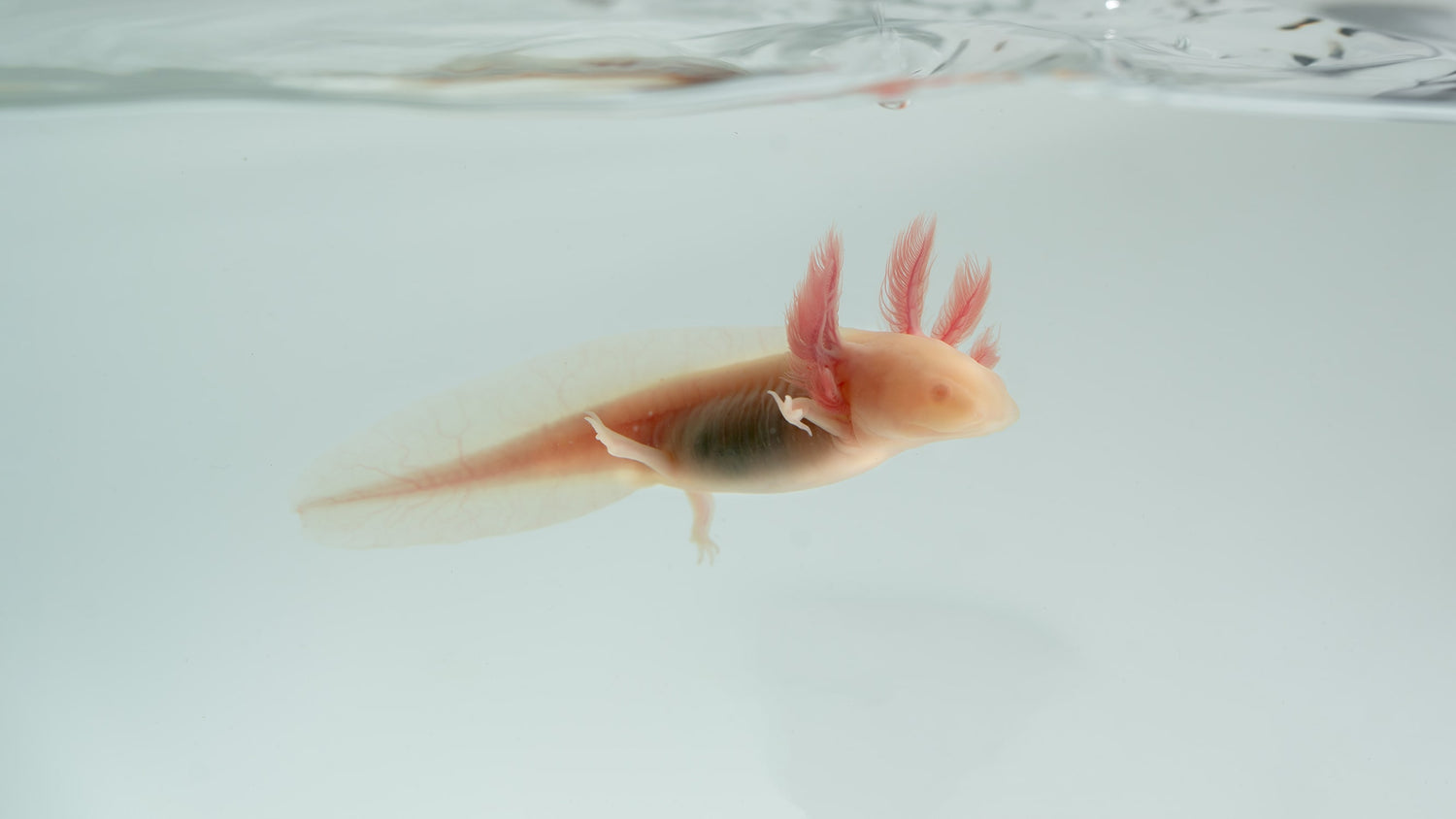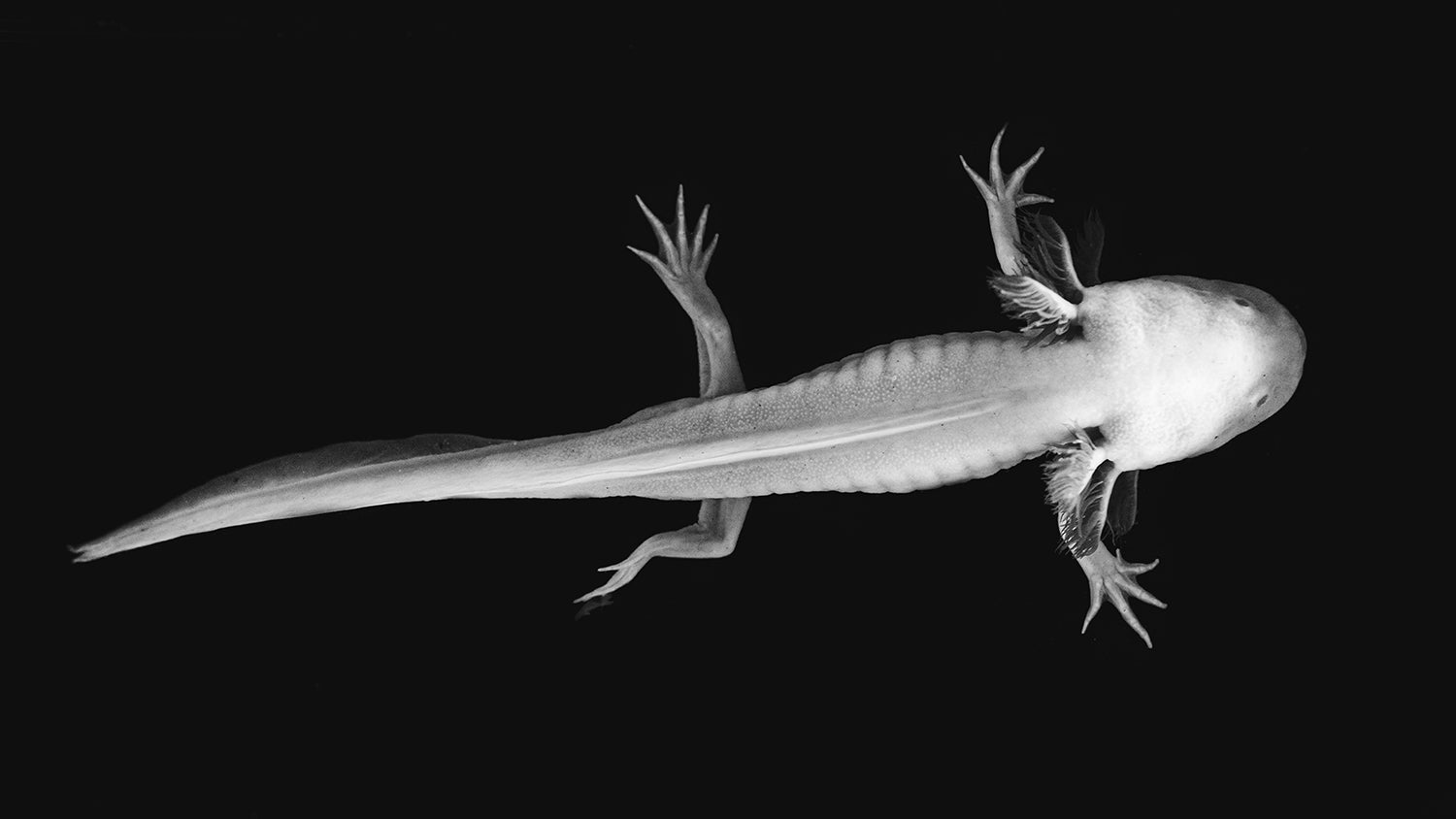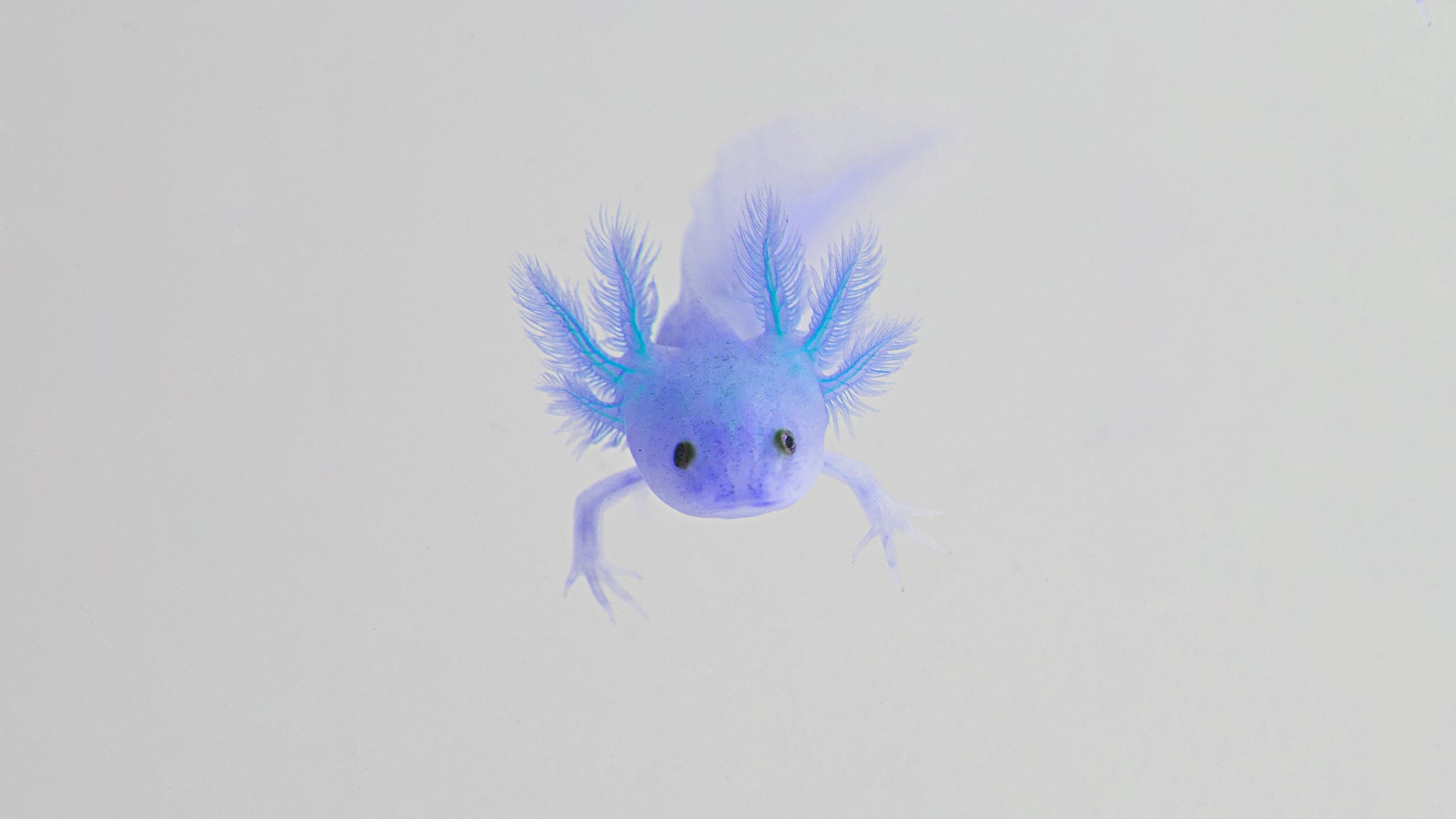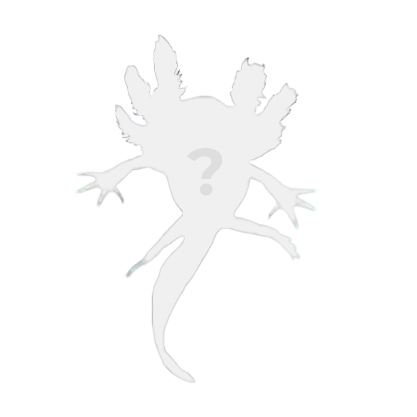Introduction
Axolotls are an amazingly beautiful species of neotenic salamander that come in all kinds of colors, some more rare than others! There are over 20 different colors, or morphs, of axolotls currently known and more being developed as new mutations appear! Why do axolotls have such a wide variety of colors? It’s all in the genes!
How Do Axolotl Genetics Work?
Axolotls have three color pigments called chromatophores in their skin. These chromatophores are each called melanophores, xanthophores, and iridophores.
Melanophores
These are chromatophores that contain eumelanin, a type of melanin that appears brown or black.
Xanthophores
These are chromatophores with large quantities of pigments that contain pteridine which appears yellow and sometimes orange/red in color!
Iridophores
Sometimes also called guanaphores, Iridophores are chromatophores that contain crystallized purines that reflect light. These are often gold or silver in color.
Different combinations of these chromatophores is how axolotls are able to come in so many different colors and the presence, or lack thereof, of each pigment is determined by the axolotl’s genes! If a gene is able to physically manifest itself on the animal, that is called a phenotype! The total number and specific types of genes possessed by an axolotl, regardless if they are expressed phenotypically or not, is called a genotype.
Axolotls are diploid animals that adhere to Mendelian inheritance patterns. This means that they carry two parts of each of their genes, one from each of their parents. The individual parts of these genes are called alleles! So, two alleles make up one gene! If both alleles in the gene are the same, then the gene is referred to as being homozygous. If each allele is different, then the gene is referred to as being heterozygous.
Alleles can either be dominant or recessive. If an allele is dominant, only one copy needs to be present in order for the gene to be expressed phenotypically. Dominant alleles are also represented by capitalized letters when documenting the genotype. If an allele is recessive, then both copies need to be present for the gene to be expressed phenotypically. Recessive alleles are represented by lowercase letters when documenting the genotype.
Known Axolotl Genetic Traits
There are several specific genes that determine axolotl coloration, or morph. Currently, there are six known genes that all axolotls possess in some combination. There is also one new mutation that is still being studied by breeders and biologists alike to concretely determine their allele structure. The known genes are:
Albinism
Albinism is a recessive trait denoted by the lowercase letter a. An axolotl that is albino will always possess the homozygous genotype a/a. All animals that phenotypically express albinism completely lack the ability to synthesize melanin and most often appear white with translucent pink/red eyes and gills. However, not all pigmentation is affected by the albinism gene. Specifically, iridophores and xanthophores can still be present in an albino individual. These individuals are what are called golden albinos and are distinct from white albinos due to their striking golden skin.
Axanthic
The axanthic gene is a recessive trait denoted by the lowercase letters ax. An axolotl that phenotypically expresses the axanthic trait will always possess the homozygous genotype ax/ax. Axanthic axolotls are characterized by a lack of xanthophores and iridophores. Axanthic specimens usually take on a darker and more purple/gray coloration than their non-axanthic counterparts.
Dark
The dark gene is a dominant trait denoted by the genotype D/D or D/d. All normal wildtype axolotls are either heterozygous or homozygous for the dark gene.
White (Leucistic)
An axolotl whose genotype is d/d (the homozygous recessive form of the dark gene) lacks the full development of dark pigmentation and is instead a white axolotl commonly referred to as a leucistic. Leucistic axolotls differ from albino axolotls in that they can still synthesize melanophores and oftentimes still develop patches of dark pigmentation along their faces, gills, and dorsal crest. They are also characterized by black eyes whereas albino axolotls have translucent pink/red eyes.
Green Fluorescent Protein
The green fluorescent protein, or GFP, gene is a dominant gene that was introduced to axolotls via genetic engineering by humans for the purposes of scientific research. It is denoted by the genotype G/G or G/g. Axolotls with the GFP gene are characterized by green eyes and fluorescent bodies that glow brightly under blue LED light.
Melanism
The melanoid gene is a recessive trait denoted by the lowercase letter m. A melanoid axolotl will always possess the homozygous genotype m/m. Melanoid axolotls are phenotypically characterized by an increased development of melanophores, decreased development of xanthophores, and a complete lack of iridophores. An easy way to determine if an axolotl possesses the melanoid gene, even if they aren’t black in color, is to see if they have a shiny gold ring in their eyes. A melanoid axolotl will completely lack any eye ring!
Copper
The copper trait is a recessive gene denoted by a lowercase c. A copper axolotl will always possess the homozygous genotype c/c. The copper trait is characterized as a type of tyrosinase positive albinism that prevents the full development of eumelanin due to a lack of oxidation (black/brown pigmentation). Instead, the axolotl produces an alternative form called pheomelanin (red/brown pigmentation). Copper axolotls are phenotypically characterized by an increase in xanthophore and pheomelanin pigmentation giving them a distinct yellow/orange and sometimes red/brown coloration.
New Axolotl Genetic Traits
All axolotls possess some combination of the previous six genes which determines their coloration. Multiple recessive traits can be expressed phenotypically at the same time, leading to ever increasingly interesting color combinations and variations in axolotls! However, there is a new mutation popping up amongst breeders that not all axolotls possess. Here is what we know so far:
Hypomelanoid
The hypomelanistic gene is thought to be a new phenotype for axolotls! Axolotl Planet, Roofus Aquatics, and Rainy Day Aquatics are so far the only breeders known to have produced this new morph of axolotl! It is characterized by a lack of melanin production even when the animal has the genes to express melanism. It has been determined by breeders and researchers that hypomelanism is a distinct and heritable trait like the copper trait. So far, breeders have only been able to identify and produce hypomelanistic coppers and hypomelanistic melanoids. Hypomelanistic copper axolotls are characterized as possessing large quantities of xanthophores and iridophores, leading them to look like golden albinos with black eyes instead of pink eyes. Hypomelanistic melanoids are characterized as looking similar to leucistic axolotls , however they are more pale gray or beige in color than white and possess darker gills. They often have patches of xanthophores along their heads and dorsal crest as well as a distinct lack of iridophores.
Different Axolotl Genotypes
These are the general genotypes for each morph of axolotl. You will notice many of the genes have an x in place of the second allele. This means that the allele could be either dominant or recessive without changing the phenotype of the axolotl.
- Wild Type: D/x A/x M/x Ax/x C/x g/g
- Axanthic: D/x A/x M/x ax/ax C/x g/g
- Melanoid: D/x A/x m/m Ax/x C/x g/g
- Melanoid Axanthic: D/x A/x m/m ax/ax C/x g/g
- Leucistic (White) Albino: d/d a/a M/x Ax/x C/x g/g
- Melanoid Albino: D/x a/a m/m Ax/x C/x g/g
- Axanthic Albino: D/x a/a M/x ax/ax C/x g/g
- Golden Albino: D/x a/a M/x Ax/x C/x g/g
- Leucistic: d/d A/x M/x Ax/x C/x g/g
- Leucistic Melanoid: d/d A/x m/m Ax/x C/x g/g
- Leucistic Axanthic: d/d A/x M/x ax/ax C/x g/g
- Leucistic Copper: d/d A/x M/x Ax/x c/c g/g
- Copper: D/x A/x M/x Ax/x c/c g/g
- Copper Axanthic: D/x A/x M/x ax/ax c/c g/g
- Copper Melanoid: D/x A/x m/m Ax/x c/c g/g
- Copper Axanthic Melanoid: D/x A/x m/m ax/ax c/c g/g
- GFP: D/x A/x M/x Ax/x C/x G/x
- Hypomelanistic Copper: D/x A/x m/m Ax/x c/c g/g h/h
- Note: these are tentative genotypes for these new morphs and are liable to change as more information about the allele structure becomes known!
- Hypomelanistic Melanoid: D/x A/x m/m Ax/x C/x g/g h/h
- Note: these are tentative genotypes for these new morphs and are liable to change as more information about the allele structure becomes known!
Conclusion
Axolotl genetics are a very important aspect of breeding and husbandry. Though it might seem complicated and daunting to learn and talk about genetics, it is well worth the effort as it allows us to better understand these gorgeous creatures and improve their genetic diversity through careful documentation! Now more than ever it is extremely important for breeders to focus on strong bloodlines in their axolotls as more and more people seek out these amazing creatures for companions!





Leave a comment
This site is protected by hCaptcha and the hCaptcha Privacy Policy and Terms of Service apply.